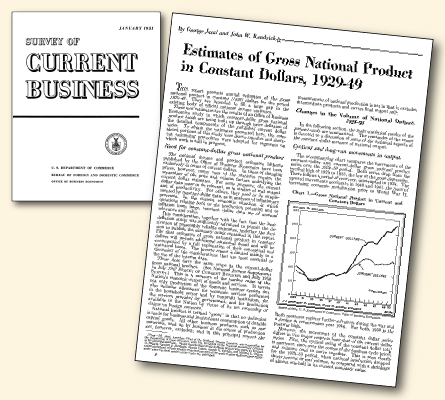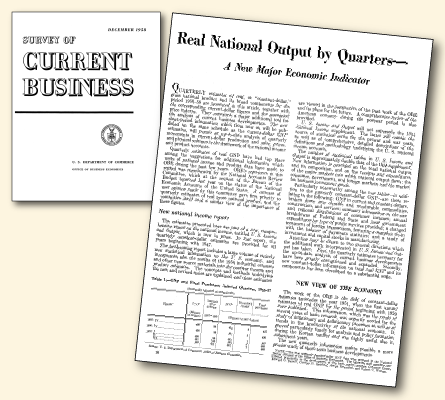Major Improvements to Gross National Product
The National Economic Accounts (NEAs) have evolved and expanded greatly throughout the last 10 decades, an ongoing process that has been captured in the Survey of Current Business. As the Bureau of Economic Analysis (BEA) celebrates the centennial of the publication of the Survey's first issue, we are looking back at milestones in BEA's history. This month, we feature two articles written in the 1950s on constant-dollar (or real) gross national product, or GNP.1
The first article, “Estimates of Gross National Product in Constant Dollars, 1929–49,” was written by two of BEA's “founding fathers”—economists George Jaszi2 and John W. Kendrick—and published in January 1951. Constant-dollar GNP evolved, according to Jaszi and Kendrick, to “fill a large gap in the existing body of official national income statistics.” This concept of constant-dollar GNP would lead to many innovations in the National Income and Product Accounts; it facilitated the analysis of cyclical movements of the economy and made possible the analysis of economic growth and the distribution of income by size class.
The second article, “Real National Output by Quarters—A New Major Economic Indicator” was written in December 1958 and illustrates BEA's continued efforts to produce more comprehensive statistics. Constant-dollar GNP by quarters was developed in large part as a response to comments from the U.S. National Accounts Review Committee and user demand.


The national income and product estimates were first published exclusively in terms of current dollars. With time, as questions relating to production potential and inflation arose, constant-dollar data became extremely relevant and valuable.
We hope you enjoy this look into the evolution of constant-dollar GNP.
- GNP was used as the primary measure of production until it was replaced with gross domestic product in 1991.
- See a reprint celebrating George Jaszi's contributions to BEA and the NEAs in this issue of the Survey.